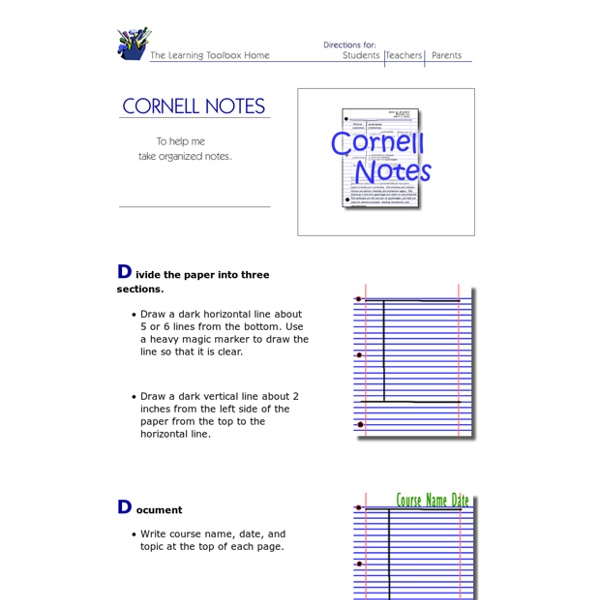The Learning Toolbox - Cornell Notes

Self-Study English Grammar Quizzes
HTML-Only Quizzes Grammar | Places | Vocabulary | Idioms | Homonyms | Scrambled Words | Misc. Activities for ESL Students has over 1,000 activities to help you study English as a Second Language. This project of The Internet TESL Journal has contributions by many teachers. Page Contents Articles | Cloze | Conjunctions | Dialogs | Plurals | Prepositions | Pronouns | Sentence Structure | Tag Questions | Verbs | What's the Correct Sequence | Word Choice | Other Quizzes
Paradigm Online Writing Assistant - Paradigm Online Writing Assistant
Welcome to LEO: Literacy Education Online
Pearson Prentice Hall: Writing Types
Course Content SuccessNet® Login Technical Support E-mail Technical Support for assistance. Writing Types Narration: Autobiographical WritingNarration: Short StoryDescriptionPersuasion: Persuasive EssayPersuasion: AdvertisementExposition: Comparison-and-Contrast EssayExposition: Cause-and-Effect EssayExposition: Problem-and-Solution EssayResearch: Research ReportResponse to LiteratureWriting for AssessmentWorkplace Writing Copyright © Pearson Education, Inc. or its affiliates. Privacy Policy Terms of Use Rights and Permissions * AP® is a trademark registered and/or owned by the College Board, which was not involved in the production of, and does not endorse, this product.
Related:
Related:



